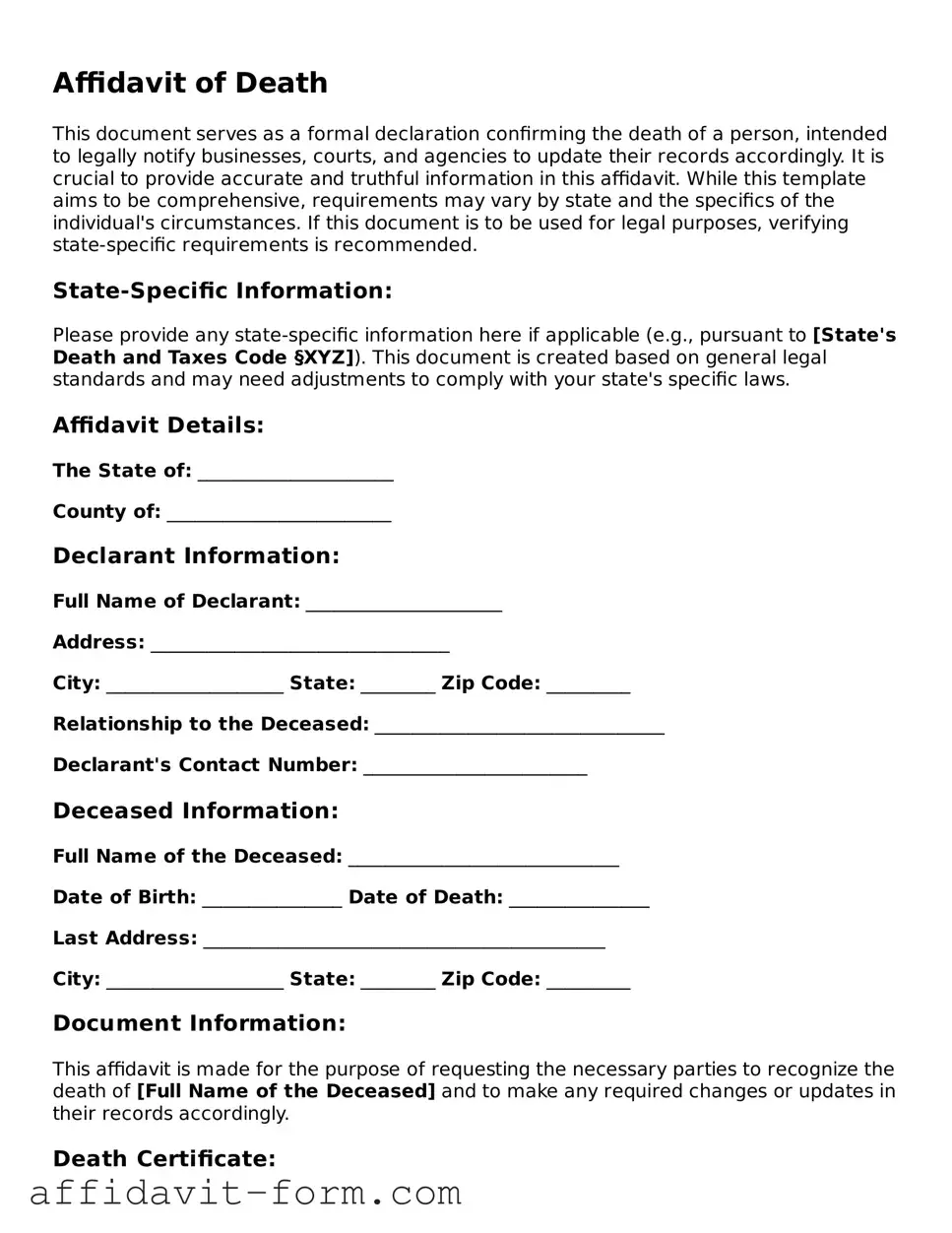Affidavit of Death
This document serves as a formal declaration confirming the death of a person, intended to legally notify businesses, courts, and agencies to update their records accordingly. It is crucial to provide accurate and truthful information in this affidavit. While this template aims to be comprehensive, requirements may vary by state and the specifics of the individual's circumstances. If this document is to be used for legal purposes, verifying state-specific requirements is recommended.
State-Specific Information:
Please provide any state-specific information here if applicable (e.g., pursuant to [State's Death and Taxes Code §XYZ]). This document is created based on general legal standards and may need adjustments to comply with your state's specific laws.
Affidavit Details:
The State of: _____________________
County of: ________________________
Declarant Information:
Full Name of Declarant: _____________________
Address: ________________________________
City: ___________________ State: ________ Zip Code: _________
Relationship to the Deceased: _______________________________
Declarant's Contact Number: ________________________
Deceased Information:
Full Name of the Deceased: _____________________________
Date of Birth: _______________ Date of Death: _______________
Last Address: ___________________________________________
City: ___________________ State: ________ Zip Code: _________
Document Information:
This affidavit is made for the purpose of requesting the necessary parties to recognize the death of [Full Name of the Deceased] and to make any required changes or updates in their records accordingly.
Death Certificate:
A certified copy of the Death Certificate is attached hereto as Exhibit A.
Statement of Truth:
I, [Full Name of Declarant], under penalty of perjury, declare that the information provided in this affidavit is true and correct to the best of my knowledge. I understand that providing false statements in this affidavit can lead to legal consequences.
Signature:
_________________________________________
Date: _______________
